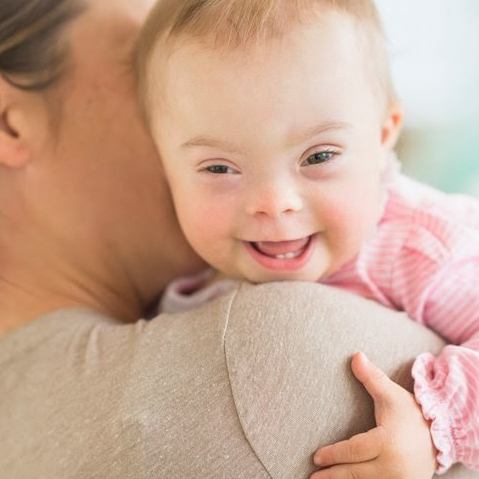Birth defects or Congenital anomalies are structural or functional problems that occur during fetal development in the womb. These defects can affect the appearance, body function, and physical or mental development of an individual. Most congenital anomalies occur during the first trimester when the body's organs are forming. While some are harmless, others may require ongoing treatment. Birth defects can have genetic causes or be linked to the mother’s health during pregnancy. They affect approximately 3% of pregnancies worldwide, with environmental factors also playing a role.
Types of Congenital Anomalies
Congenital anomalies may be structural (affecting physical body parts), developmental (impacting organ function, learning abilities, or senses), or a combination of both.
Structural Anomalies
Examples of structural congenital anomalies include heart defects, limb deformities, and cleft lip or palate.
Heart Defects
Heart defects are the most common congenital anomalies. Although they usually have no known cause, maternal diabetes or smoking during pregnancy increases the risk. In heart defects, parts of the heart fail to form properly, affecting blood circulation. The most common type is a ventricular septal defect, which involves a hole in the wall separating the two lower chambers of the heart. Many cases resolve on their own, while severe cases may require immediate surgery after birth.
Congenital Limb Deficiencies
Congenital limb deficiencies occur when part of a limb fails to form completely in the womb or is smaller than normal. The severity of the defect can vary—some individuals may live without restrictions, while others may require physical therapy, braces, or prosthetics to aid mobility. Exposure to chemicals or infections during pregnancy might play a role in causing these defects.
Cleft Lip or Palate
Cleft lip or palate occurs when the tissues forming the roof of the mouth or the lips do not join properly. This defect may affect speech, hearing, and eating. Most infants with cleft lip or palate require surgery within the first few months of life, and severe cases may need multiple surgeries.
Neural Tube Defects
Neural tube defects impact the brain and spinal cord during the early months of pregnancy. Types of neural tube defects include:
- Anencephaly: Parts of the brain and skull fail to form.
- Encephalocele: Brain tissue protrudes outside the skull due to incomplete closure of the neural tube.
- Spina bifida: The spinal column fails to form or close properly, affecting the spinal cord and nerves. Symptoms vary from mild to severe and can include paralysis, learning disabilities, or bladder and bowel issues.
While anencephaly and encephalocele are rare, spina bifida is more common. Consuming folic acid during pregnancy can significantly reduce the risk of neural tube defects.
Gastrointestinal Anomalies
- In some cases, abdominal muscles do not form properly, creating a hole near the belly button. Organs such as the intestines may form outside the body.
- Gastroschisis: The abdominal wall fails to close completely, and intestines develop outside the body without protective covering. Surgery is required immediately after birth.
- Diaphragmatic hernia: A hole in the diaphragm allows organs to move into the chest cavity. Surgery is necessary to restore normal lung function and breathing.
Developmental Anomalies
Down Syndrome
Individuals with Down syndrome are born with an extra chromosome, affecting their brain and body development.
Vision Impairments
Vision impairments caused by irregular eye shapes may prevent proper communication between the brain and eyes, affecting sight.
Hearing Impairments
Most infants undergo hearing screenings within the first month of life. Hearing impairments, ranging from partial hearing loss to complete deafness, may be genetic.
Fetal Alcohol Syndrome
This syndrome results from alcohol consumption during pregnancy, impacting learning, growth, and development.
Cerebral Palsy
Cerebral palsy, the most common motor disability in childhood, results from brain damage during development and affects balance, movement, and posture.
Muscular Dystrophy
This condition causes progressive muscle weakness. Various types of muscular dystrophy exist, depending on the muscles affected.
Genetic Disorders
Genetic disorders can disrupt development. The most common is fragile X syndrome, which impairs brain development, learning, and behavior.
Specific Language Impairment
This communication disorder disrupts language skills in children without hearing or intellectual impairments. Affected children may struggle with reading, writing, speaking, and listening.
Can Birth Defects Be Prevented?
While it is impossible to prevent all congenital anomalies—around 50% have no known cause—maintaining good health and reducing risk factors can lower their likelihood. Recommendations include:
- Daily intake of 400 micrograms of folic acid during pregnancy to prevent neural tube defects like spina bifida.
- Regular prenatal checkups with a healthcare provider.
- Avoiding alcohol, smoking, and recreational drugs during pregnancy. Alcohol increases the risk of fetal alcohol syndrome, while smoking raises the likelihood of cleft lip/palate, premature birth, and low birth weight.
- Careful consideration of medications during pregnancy.
- Preventing infections, as infections during pregnancy can lead to hearing impairments in the baby.
- Avoiding exposure to excessive heat.
- Prompt treatment of fever, as high temperatures during pregnancy can increase the risk of congenital anomalies, particularly those involving brain and spinal development.
- Maintaining a healthy weight.
- Managing gestational diabetes effectively.
Sources: medicalnewstoday.com, healthline.com












Our Customers' Comments
No comments registered